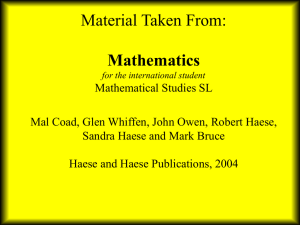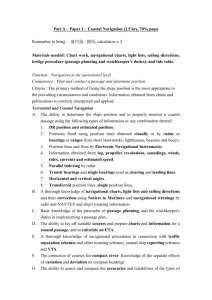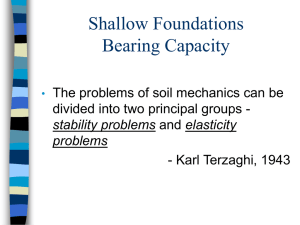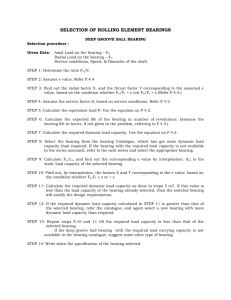Alternate Bearing in Pecans
advertisement
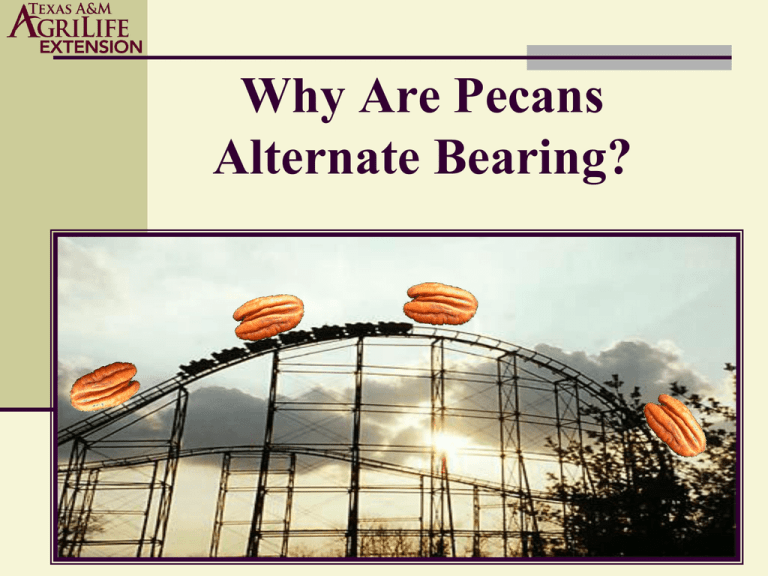
Why Are Pecans Alternate Bearing? We will cover…. 1 – What is alternate bearing? 2 – Why does it occur? 3 – How do we stop it, slow it, or manage it? What is Alternate Bearing? Alternate Bearing- the tendency for wide cyclical swings in yield Referred to as : ‘On’ and ‘Off’ years ‘Good’ and ‘Bad’ years ‘Heavy’ and ‘Light’ years Related terms: Biennial bearing, irregular bearing, masting (every other year) (scattered years of production) (insect trickery) Is Alternate Bearing Bad? --- Ecological Perspective Alternate bearing in the wild: Oak, beech, pine, elm, hickory Advantage: Pest suppression (less babies, less food for pests) Assures a good crop – every other year Alternate Bearing: Who’s Guilty? Nuts Temperate Fruits Sub-Tropical Fruits Tropical Fruits Hazelnuts Apples Avocados Litchis Pecans Apricots Citrus Mangos Pistachios Pears Olives Walnuts Prunes Source: Monselise and Goldschmidt, 1982 (Millions of Pounds) l In-Shell Yield 700 600 500 400 300 200 100 0 Walnut 20 06 20 05 20 04 20 03 20 02 20 01 20 00 19 99 19 98 19 97 19 96 19 95 19 94 19 93 19 92 19 91 (Millions of Pounds) l In-Shell Yield 700 Pecan 600 500 400 300 200 100 0 What does alternate bearing look like for mature trees? How are TX pecans doing? Yield (Millions of Pounds) l California New Mexico Texas 100 80 60 40 20 0 91 992 993 994 995 996 997 998 999 000 001 002 003 004 005 006 9 1 1 1 1 1 1 1 1 1 2 2 2 2 2 2 2 Affects of Alternate Bearing --- Horticultural Perspective It Hurts Every Level of the Pecan Industry! Pecan tree health Too much growth during “off” years may cause: Freeze damage (rare, but possible) Limb breakage (combo of leaf/stem weight and drought) Tree “collapse” Too little growth during “off” years result in less production the following year. Pecan processors and contract harvesters Facilities/equip. run below capacity in “off” years. Affects of Alternate Bearing --- Financial Perspective Fluctuations in Quality Small, poorly filled nuts Premature germination Shuck decline Average In-Shell Pecan Price 1992-2009 Instability of cash flow ‘On’ Years $0.89/lb ‘Off’ Years $1.17/lb Why does it occur? Management: Avoid “triggering events”- if possible. Severe infestations of nut-eating insects Late frosts Early spring hail storms Severe drought Severe lack of nitrogen &/or zinc. Severe foliage feeding insects. Trigger (e.g. Hail) On Off On Off On Off On Off On Off On Off Why does it occur? Management: Orchard setup. Dense populations of trees causes: Competition for nutrients Competition for water Competition for light Over-production of nuts Excessive vegetative growth Mono-culture regarding varieties Why does it occur? Management: Best varieties Smaller nuts Cultivar Alternate Bearing Intensity (I) Barton 0.36 Bradley 0.56 Burkett 0.29 Cape Fear 0.53 Cherokee 0.91 (worst) Desirable 0.40 Elliot 0.68 Gloria Grande 0.27 Mahan 0.74 Moneymaker 0.68 San Saba 0.85 Schley 0.60 Stuart 0.47 Western Schley 0.56 Wichita 0.67 (best) How do we stop it? Insect Control Aphid Fall-Webworm Shuck worm Disease Control Scab Mildew Irrigation (minimum of 1”/wk. Use a rain gauge Irrigate if feasible Start - June 1, End - Sept. 15th Source: entoplp.okstate.edu How do we stop it? Plant several varieties Include small-kernal varieties Include some low alternate-bearing index varieties Soil Testing/Tissue Analysis Zinc nutrition Nitrogen nutrition ‘On’ vs ‘Off’ year rates? Late season application? Proper pruning and thinning of trees, and possibly thin fruit in heavy years. Source: entoplp.okstate.edu What about next year? Edited by: Vincent Mannino, County Extension Director – Fort Bend


